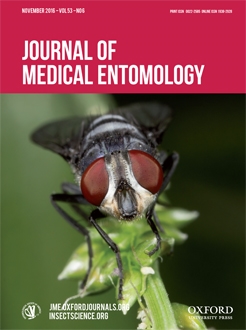Zoonotic mosquito-borne viruses, such as the West Nile virus (WNV) and eastern equine encephalitis virus (EEEV), are major public health threats in the United States. Early detection of virus transmission and targeted vector management are critical to protect humans against these pathogens. Sentinel chickens and pool screening of mosquitoes, the most widely used methods of arbovirus early detection, have technical time-lags that compromise their early-detection value. The exploitation of sugar-feeding by trapped mosquitoes for arbovirus surveillance may represent a viable alternative to other methods. Here we compared effectiveness of sugar-impregnated nucleic-acid preserving substrates (SIPS) and sentinel chicken program for detecting WNV, EEEV, and St. Louis encephalitis virus in gravid traps, CO2-baited light traps, and resting traps at 10 locations in two Florida counties. In St. Johns County, comparable numbers of EEEV detections were made by SIPS traps (18) and sentinel chickens (22), but fewer WNV detections were made using SIPS (1) than sentinel chickens (13). In Volusia County, seven arbovirus detections were made via the sentinel chicken program (one EEEV and six WNV), whereas only one arbovirus detection (WNV) was made using SIPS. CO2-baited light traps captured >90% of total mosquitoes, yet yielded <30% of arbovirus detections. Resting traps and gravid traps captured a fraction of total mosquitoes, yet yielded roughly equivalent numbers of arbovirus detections, as did light traps. Challenges to successful deployment of SIPS include optimization of traps for collecting all vector species, increasing sugar-feeding rates of trapped vectors, and developing tractable methods for arbovirus detection.
How to translate text using browser tools
21 June 2016
Evaluation of the Honey-Card Technique for Detection of Transmission of Arboviruses in Florida and Comparison With Sentinel Chicken Seroconversion
Nathan D. Burkett-Cadena,
Jennifer Gibson,
Miranda Lauth,
Tanise Stenn,
Carolina Acevedo,
Rui-de Xue,
James McNelly,
Edward Northey,
Hassan K. Hassan,
Ali Fulcher,
Andrea M. Bingham,
Jose van Olphen,
Alberto van Olphen,
Thomas R. Unnasch
ACCESS THE FULL ARTICLE
It is not available for individual sale.
This article is only available to subscribers.
It is not available for individual sale.
It is not available for individual sale.

Journal of Medical Entomology
Vol. 53 • No. 6
November 2016
Vol. 53 • No. 6
November 2016
arbovirus
Florida
mosquito sampling
sentinel animal
surveillance




